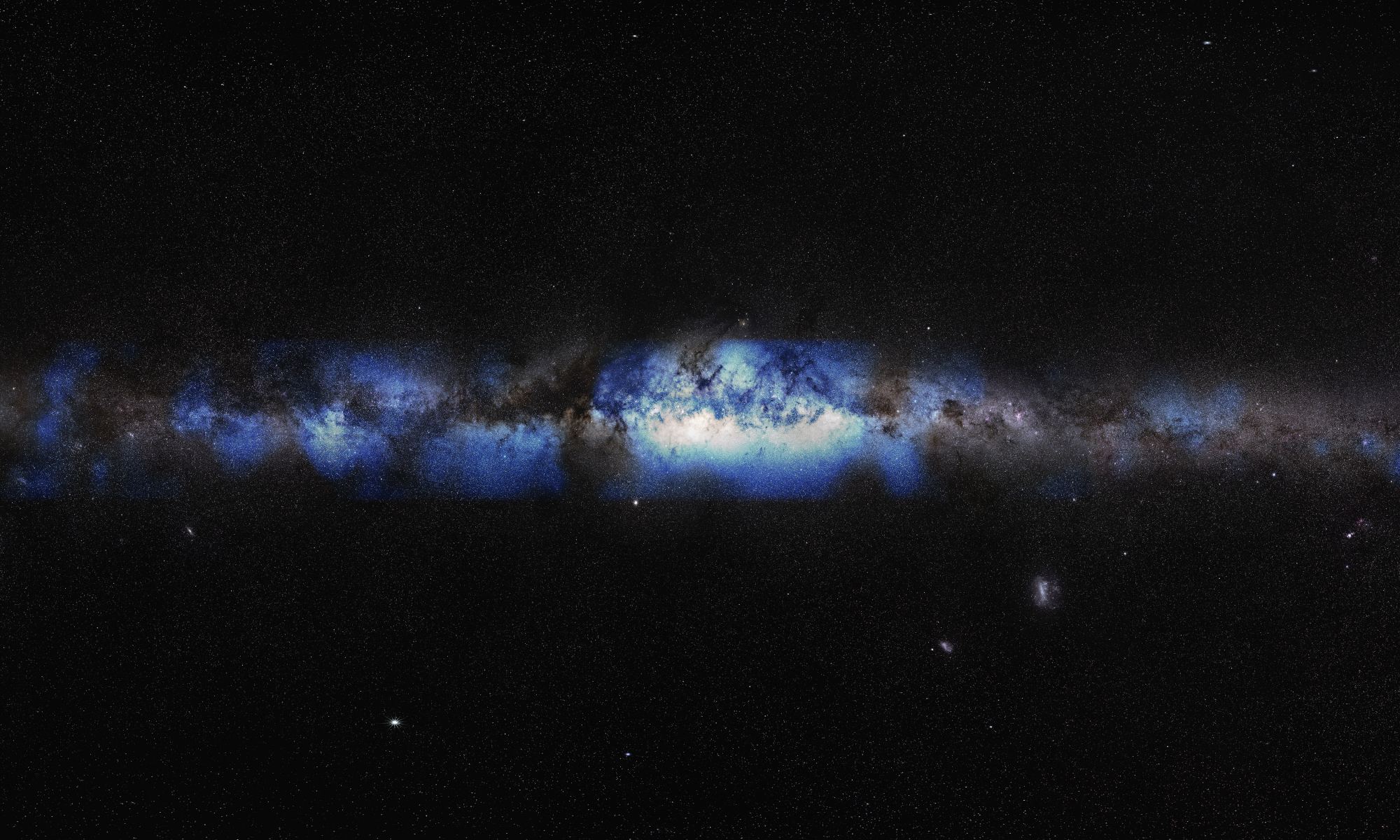We’ve seen the Milky Way with ultraviolet eyes, through x-ray vision, gamma-ray views, radio emissions, microwaves, and visible light. Now, consider a neutrino point of view. Thanks to the IceCube Collaboration, we get to see our home galaxy through the lens of this mysterious particle. It’s an eerie sight that also tells us our galaxy isn’t quite like the others. It’s a neutrino desert.
Neutrinos are tiny, massless particles. They speed across the universe and seem to come at Earth from all directions. When atomic nuclei come together or break apart, they produce these particles. This can happen in galactic and cosmic sources (such as supernova explosions) to produce high-energy neutrinos. There are also atmospheric neutrinos, produced when a cosmic ray smashes through the air. A team of 350 scientists collaborated to map high-energy neutrino emissions from the Milky Way. It turns out that the Milky Way produces far fewer of them than many distant galaxies.
“What’s intriguing is that, unlike the case for light of any wavelength, in neutrinos, the universe outshines the nearby sources in our own galaxy,” says Francis Halzen, a professor of physics at the University of Wisconsin–Madison and principal investigator at IceCube. He and the team want to know why.
Mapping the Wild Neutrino
IceCube Collaboration focused on the central part of the Milky Way’s galactic plane. The facility is in Antarctica, almost directly under that part of the sky. The team faced some unusual challenges, however. There’s a constant “background buzz” of energetic particles produced by cosmic-ray interactions with Earth’s atmosphere. That made it difficult to sift out the sparse numbers of high-energy neutrinos from galactic sources. These have energies millions to billions of times higher than those produced in stars, for example.

To get at their high-energy prey, the IceCube team looked for so-called “cascade” events in a dataset of 60,000 detections from ten years’ worth of IceCube data. The additional detailed analysis helped them select what they called “higher purity” events. These represent astrophysical neutrinos from beyond Earth, such as those from the energetic core of the M77 galaxy. Another part of the collaboration devised a machine-learning method to help characterize the cascades created by neutrinos. They compared those from the Milky Way to prediction maps of locations where the Milky Way should be bright in neutrinos. That told the team the Galaxy doesn’t match up to other galaxies in terms of neutrino output.
Neutrinos Provide a Clue or Two
This puzzling find in our own galaxy raises other questions about why it’s so lacking in these particles. According to collaborator Ke Fang, it’s 10 to 100 times dimmer in neutrinos than the others. That raises the question of why that’s true and where the high-energy sources exist.
“One implication is that our galaxy has not hosted the type of sources that produced the bulk of high-energy neutrinos for the past few million years,” said Fang, “which is roughly the time since the last jet activity of the black hole of our own galaxy. Planned and future follow-up analyses by IceCube will further our understanding of the particle accelerators of our own galaxy.”
The core of the Milky Way, with the supermassive black hole (Sag A*), is obscured from us by vast clouds of gas and dust. Ongoing studies reveal activity in the core, particularly when Sgr A ingests material. Stars in the region follow looping trajectories influenced by the black hole’s immense gravity. But, the black hole is not, at the moment, as active as those in active galactic nuclei. In those places, neutrinos are produced in abundance. Further IceCube observations of the central plane of the Milky Way should help explain its neutrino-poor “problem.”
About IceCube
The IceCube observatory is the first-ever neutrino detector built at the South Pole. The actual detector is embedded in a kilometer-sized block of ice, which helps it in the search for neutrinos. These fast-moving particles originate in energetic events in the cosmos, such as exploding stars, gamma-ray bursts, and encounters between black holes and neutron stars. Not only does this observatory search out neutrinos and other particles, but it’s supposed to help scientists answer some fundamental mysteries in science. These include delving into what makes a neutrino tick. In addition, data from the observatory may help answer questions about dark matter.
For More Information
IceCube shows Milky Way Galaxy is a Neutrino Desert
Observation of high-energy neutrinos from the Galactic plane
IceCube Observatory

